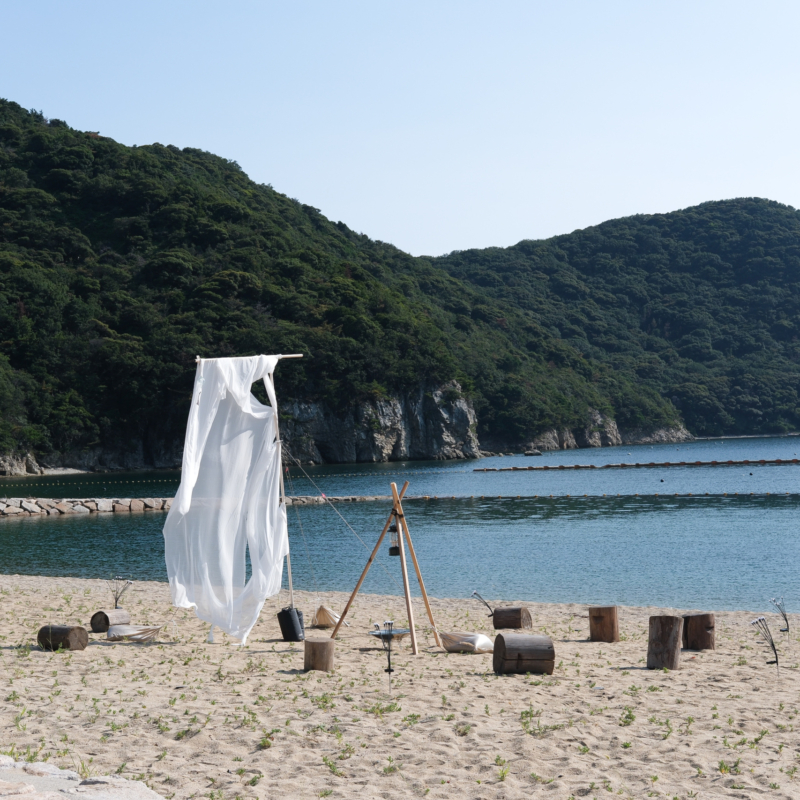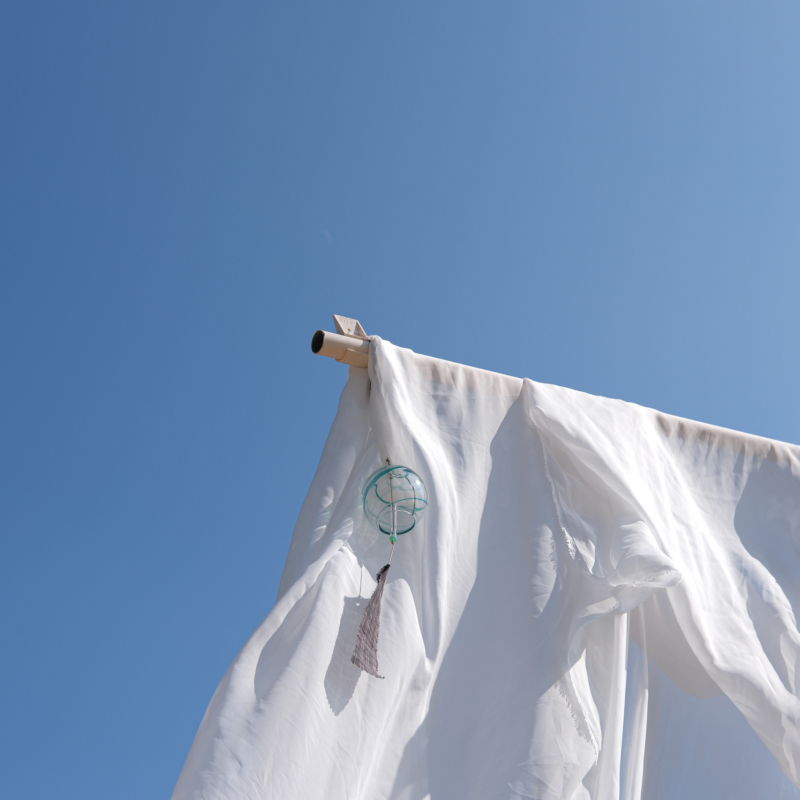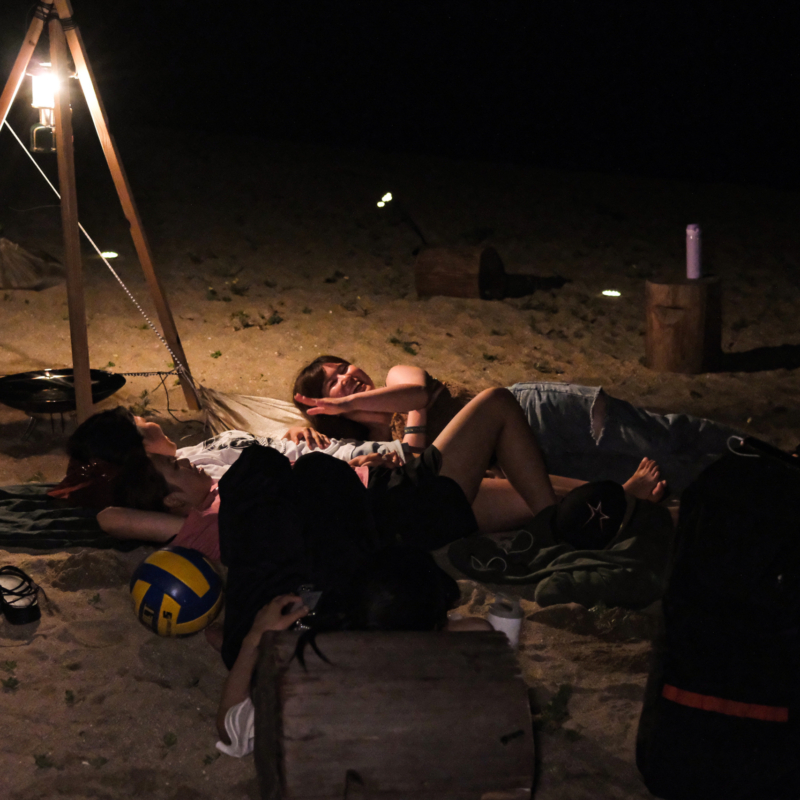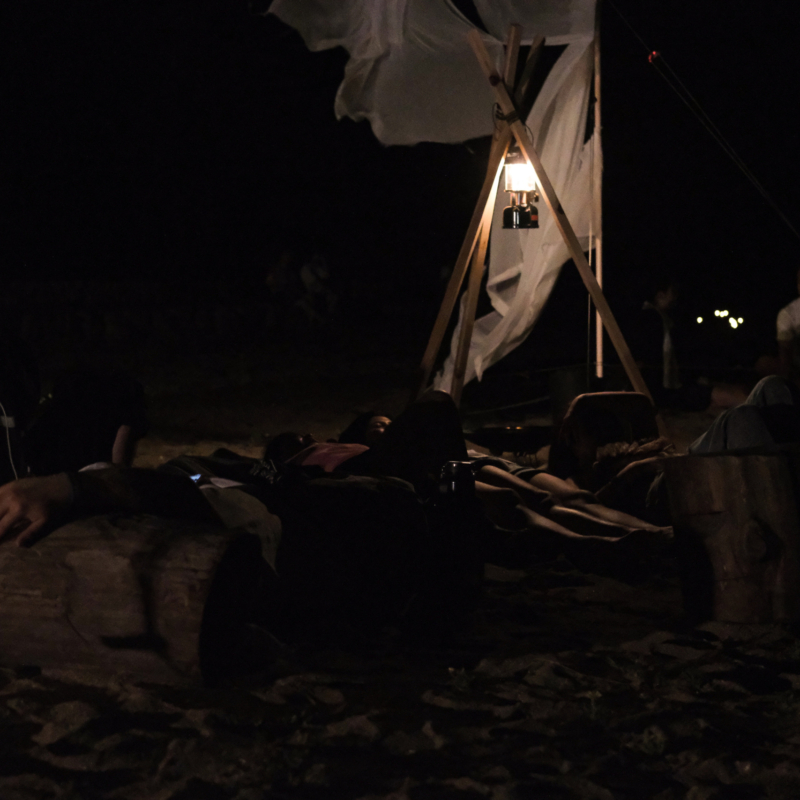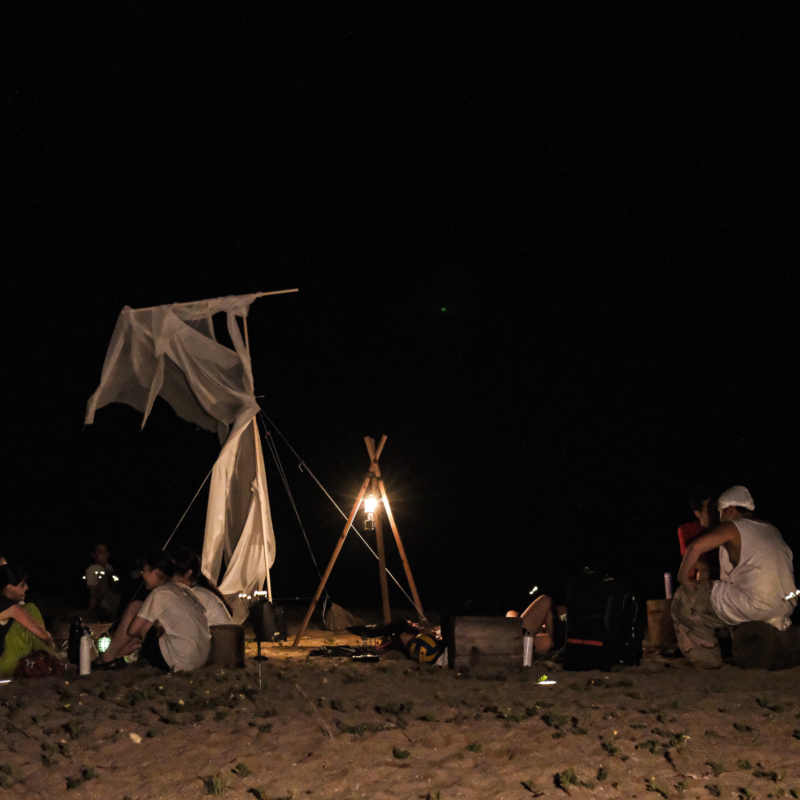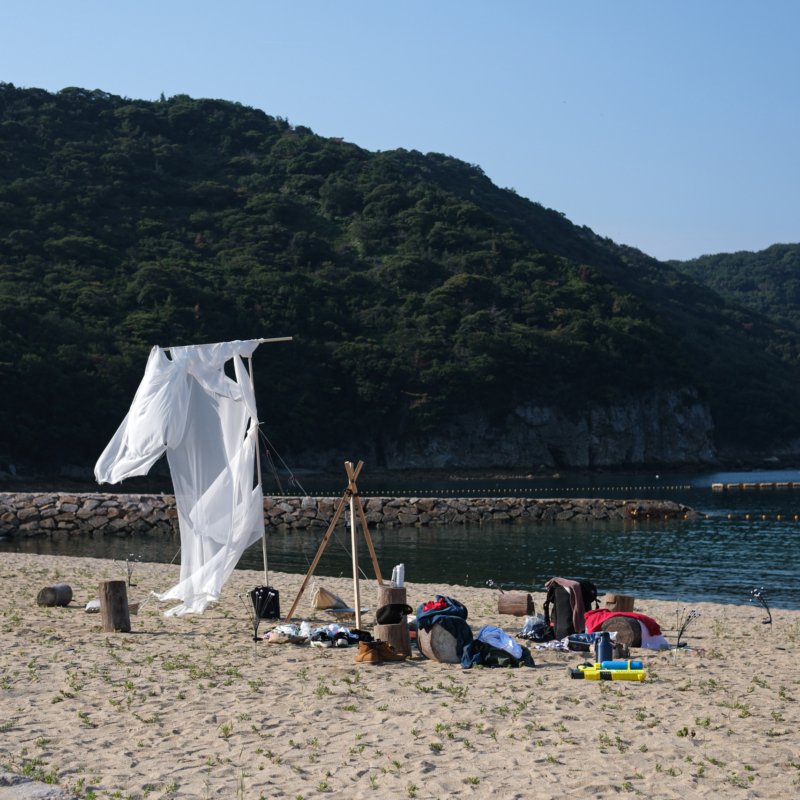《a lighthouse》
work at Nishizima, Ieshima Islands, in Setouchi, JAPAN.
Participatory Installation
size : 49㎡ (700cm×320cm×700cm).
materials : Lantern, erector pipes, fabric, LED lights, wood, wind chimes, fire disc, rope, weight bags .
26/08- 30/08 2025.
This work is an installation placed at the center of the space for Mujinto 100FES, a music festival held on Nishijima in the Ieshima Islands of the Seto Inland Sea, Japan. The festival—organized and hosted by the artist—brings together about 150 participants who live communally for four days and three nights, opening themselves to one another through music, dialogue, and shared routines.
A lighthouse is a place that casts light, finds us, and guides us. At the same time, standing there allows us to look outward and survey the world. This installation functions as such a lighthouse for those who gather around it. Drawn by the sound of wind chimes, people orient themselves by the light and make their way to the device. They sit near the glow, meet others, and quiet, trivial conversations begin to arise. Shadows lengthen from surrounding light sources and overlap across the ground. Illuminated by the central light, a surface of water spreads, riffled by the wind; fabric stirs in the breeze and seems to dissolve into the air.
Encircled by these layered, intermingling phenomena, people gradually loosen, exposed to the world as pure presences. What is generated here is a relation with a face—a situation in which we appear to one another as irreducible beings. Titles, past experiences, and any ideology are temporarily set aside—bracketed. This resembles Husserl’s epoché: the suspension of presuppositions that allows us to face what is before us. By clearing away preconceptions and attending to the present presence, we acquire a freer mode of thought and a framework that gently sways and reshapes itself. We become able to notice expressions and postures, tones of voice, the smallest nonverbal signals.
From this attentiveness, the world of the other begins to open. The face is a threshold of ethical relation—prior to language and social contract. At the same time, our anonymity is peeled away; we are revealed before others as pure beings, released—if only for a moment—from faceless, screen-mediated relations and from the reflex to exclude alterity. The formation of this relational field marks a threshold of imagination toward others—the first point at which the boundaries of the self expand and begin to overlap with the existence of the other.

